The Presidential Office yesterday stayed mum after US president-elect Donald Trump questioned the necessity for Washington to adhere to its long-standing “one China” policy.
In an interview with the Fox News Sunday program, Trump first denied that a Dec. 2 telephone call between President Tsai Ing-wen (蔡英文) and himself was planned weeks in advance.
“Not weeks. I took a call. I heard the call was coming probably an hour or two before,” Trump said.
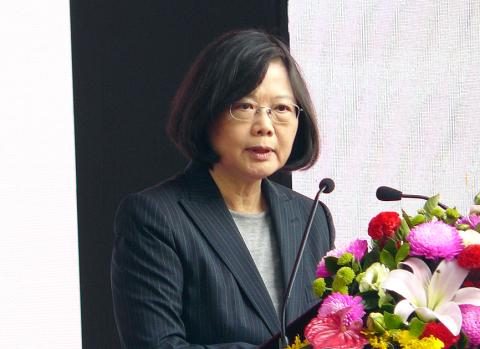
Photo: CNA
He then went on to question the need for Washington to stick to its “one China” policy.
“I fully understand the ‘one China’ policy, but I don’t know why we have to be bound by a ‘one China’ policy unless we make a deal with China having to do with other things, including trade,” he said.
Presidential Office spokesman Alex Huang (黃重諺) yesterday morning said the office had no comments about Trump’s remarks on the Fox show.
Huang also declined to respond directly to Trump’s claim that he only learned that Tsai was to call him shortly before it occurred.
The contact process and details regarding the call between Tsai and Trump were conducted in accordance with the customary practices for Taiwan-US interactions, Huang said.
“We do not have any further explanation,” he said.
The US has endorsed a “one China” policy since 1972, when then-US president Richard Nixon signed the Shanghai Communique with then-Chinese premier Zhou Enlai (周恩來).
Washington severed diplomatic ties with Taipei in 1979 and switched recognition to Beijing. Since then there had been no known direct communications between the leaders or prospective leaders of the nations until the Dec. 2 telephone call.
Former president Ma Ying-jeou (馬英九) also downplayed Trump’s comments on the “one China” policy, while the Chinese Nationalist Party (KMT) urged the US to take into account stability across the Taiwan Strait before commenting on cross-strait issues.
Ma was asked for a comment as he attended a forum in Taipei marking the 70th anniversary of the nation’s occupation of Itu Aba Island (Taiping Island, 太平島) in the South China Sea.
“Since Trump has not yet been inaugurated, it makes more sense for me to wait until after he takes office on Jan. 20 to comment on the matter to see if he still appears to stand by this stance,” Ma said.
As for the possible impact of the phone call on Taiwan-US-China relations, Ma said the situation was too uncertain for him to make a clear judgement.
However, the KMT appeared more worried about Trump’s remarks. An unstable Taiwan Strait could destabilize Northeast Asia and even the entire world, the party said in a statement.
“Therefore, we urge any country to give priority to cross-strait stability before giving their opinions about issues related to the Taiwan Strait,” KMT Culture and Communications Committee deputy director Hu Wen-chi (胡文琦) said.
Hu said cross-strait tensions have already been raised due to Tsai’s refusal to acknowledge the so-called “1992 consensus” and her failure to produce any pragmatic solutions to cross-strait issues since taking office.
“Tsai, by talking on the telephone with Trump, gave Beijing a slap in the face,” Hu said.
“We urge the president to refrain from putting the lives of 23 million Taiwanese at risk, and to let cross-strait peace and stability take precedence,” he said.
The “1992 consensus” refers to a tacit understanding between the KMT and the Chinese Communist Party that both sides of the Strait acknowledge that there is “one China,” with each side having its own interpretation of what “China” means.
Former Mainland Affairs Council chairman Su Chi (蘇起) said in 2006 that he had made up the term in 2000.
Additional reporting by Lin Liang-sheng
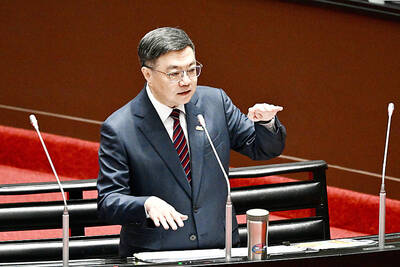
NATIONAL SECURITY: The Chinese influencer shared multiple videos on social media in which she claimed Taiwan is a part of China and supported its annexation Freedom of speech does not allow comments by Chinese residents in Taiwan that compromise national security or social stability, the nation’s top officials said yesterday, after the National Immigration Agency (NIA) revoked the residency permit of a Chinese influencer who published videos advocating China annexing Taiwan by force. Taiwan welcomes all foreigners to settle here and make families so long as they “love the land and people of Taiwan,” Premier Cho Jung-tai (卓榮泰) told lawmakers during a plenary session at the Legislative Yuan in Taipei. The public power of the government must be asserted when necessary and the Ministry of
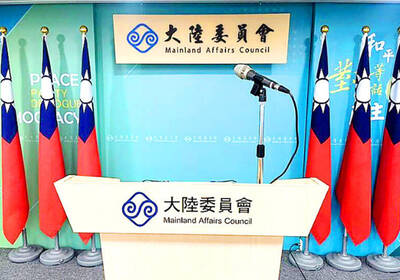
CROSSED A LINE: While entertainers working in China have made pro-China statements before, this time it seriously affected the nation’s security and interests, a source said The Mainland Affairs Council (MAC) late on Saturday night condemned the comments of Taiwanese entertainers who reposted Chinese statements denigrating Taiwan’s sovereignty. The nation’s cross-strait affairs authority issued the statement after several Taiwanese entertainers, including Patty Hou (侯佩岑), Ouyang Nana (歐陽娜娜) and Michelle Chen (陳妍希), on Friday and Saturday shared on their respective Sina Weibo (微博) accounts a post by state broadcaster China Central Television. The post showed an image of a map of Taiwan along with the five stars of the Chinese flag, and the message: “Taiwan is never a country. It never was and never will be.” The post followed remarks
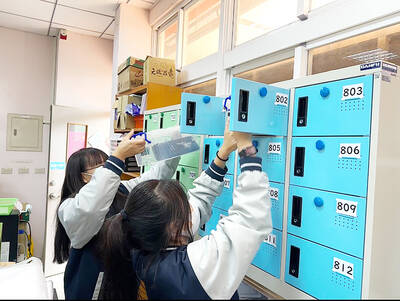
Proposed amendments would forbid the use of all personal electronic devices during school hours in high schools and below, starting from the next school year in August, the Ministry of Education said on Monday. The Regulations on the Use of Mobile Devices at Educational Facilities up to High Schools (高級中等以下學校校園行動載具使用原則) state that mobile devices — defined as mobile phones, laptops, tablets, smartwatches or other wearables — should be turned off at school. The changes would stipulate that use of such devices during class is forbidden, and the devices should be handed to a teacher or the school for safekeeping. The amendments also say
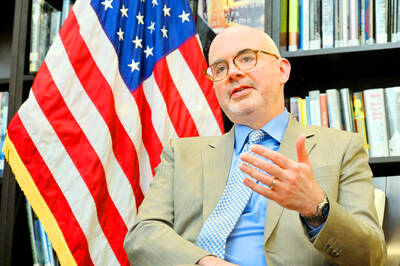
CONSISTENT COMMITMENT: The American Institute in Taiwan director said that the US would expand investment and trade relationships to make both nations more prosperous The US would not abandon its commitment to Taiwan, and would make Taiwan safer, stronger and more prosperous, American Institute in Taiwan Director Raymond Greene said. “The US’ commitment to Taiwan has been consistent over many administrations and over many years, and we will not abandon our commitment to Taiwan, including our opposition to any attempt to use force or coercion to change Taiwan’s status,” he said in an exclusive interview with the Liberty Times (the sister newspaper of the Taipei Times) on Friday last week, which was published in the Chinese-language newspaper yesterday. The US would double down on its efforts